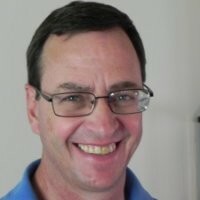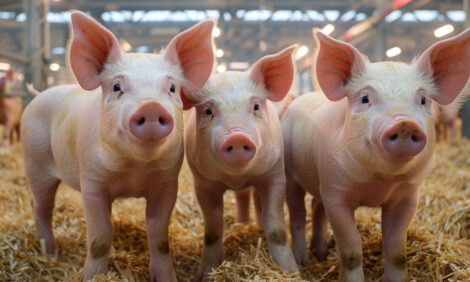



AASV: Managing influenza A virus in swine
Veterinarians’ perspectives on dealing with IAV in swineDuring the 2024 American Association of Swine Veterinarians annual conference, two veterinarians explained how they deal with the ever-present threat of swine influenza.
Emily McDowell, DVM, Pipestone Veterinary Services in Minnesota, explained that a whole herd approach is needed to control and eliminate swine influenza A (IAV). The two common populations where IAV circulates in a sow farm are: gilt developer and piglets in farrowing.
It is recommended that an influenza vaccine be used routinely on sows and gilts regardless of their flu status and that the vaccine be administered as a mass vaccination, she said.
Killed vaccines are used; multivalent autogenous vaccines are made up of IAV strains from replacement gilt sources supplying the management company farms. These vaccines are updated annually, McDowell noted. In an IAV elimination effort, two whole-herd vaccinations are given two to three weeks apart to all sows and gilts. After the mass vaccinations are completed, internal biosecurity practices and piglet and sow movement restrictions start, she added.
The ideal is to bring in IAV negative gilts whenever possible. In situations where this is not possible and there is no IAV circulating in the farrowing house piglet population, an aggressive vaccination and internal biosecurity (extended quarantine) area is set up in the gilt developer unit, McDowell said.
Internal biosecurity
She noted that the goal of an extended quarantine in the gilt developer unit is to prevent IAV exposure to negative populations (piglets in farrowing, for example). IAV positive gilts that arrive in the gilt developer will receive multiple influenza vaccinations two weeks apart. These gilts will be quarantined from the remainder of the farm for 8-10+ weeks.
Caretakers must wear dedicated clothing, boots and gloves in these quarantined rooms after arrival. In addition, extra PCR testing may be done to validate a negative IAV status prior to allowing contact with other populations of animals at the farm. The extended quarantine plan utilized in gilts works well on farms that operate under aerosol filtration, she noted.
When pursuing an IAV elimination in the piglets, farrowing house biosecurity practices are vital. The farrowing house restrictions are enforced for a minimum of 12 weeks of time. Farrowing house rooms are strictly run all-in all-out. Partial washing of farrowing rooms is prohibited, McDowell emphasized.
Farrowing house personnel are blocked to rooms by age of the piglets. Individuals are allowed to move from younger to older rooms without any change of clothes or washing of hands. However, if personnel help with activities such as weaning in the morning, a change of clothes and washing of hands is required before going to help with the younger pigs (front end or processing, for example), she said.
The farrowing house is organized into three blocks of rooms: youngest block is front end (less than 3 days of age); the middle block is processing (3 to 7 days of age); and the final block is processing to wean (7 days of age to weaning). Farrowing house personnel within each block can go in and out of the rooms in that block without a change of clothes. If going from an older block to a younger block, a change of clothes and washing of hands is required, McDowell noted.
Sow and piglet movements between farrowing rooms must be highly restricted in an IAV elimination effort, she said. No nurse sows are allowed to be used routinely. If a sow dies or needs to be nursed off, a newly farrowed sow (less than 24 hours) is the only sow allowed to replace her. Piglets can be moved only on the day they are born to even out litters. No piglet movements are allowed after 24 hours of being born.
Testing
Oropharyngeal swabbing (OP) swab testing in the farrowing house is used to determine IAV status and the progress of the elimination effort. OP testing starts two weeks after the last whole herd vaccination to the sows and gilts. During an elimination program, 30 OP swabs are collected from weaned pigs every two weeks. The OP swabs are pooled in groups of five and submitted for PCR testing. McDowell concluded by saying that nursery PCR testing helps validate the testing done in the farrowing house.

An evolving virus
Attila Farkas, DVM, Carthage Veterinary Service in Illinois, noted that IAV is a highly contagious respiratory virus that is endemic in pigs worldwide. It can cause fever, inactivity, coughing, sneezing, conjunctivitis, nasal discharge, and abortions in pregnant sows.1
The challenge of effective IAV control is that the virus is highly diverse and ever-evolving. It is especially difficult to eliminate in sow herds because gilts and piglets are constantly introduced. The approach to eliminating endemic swine influenza A virus in sow herds lacks standardization, he said. Repeated outbreaks and rapid spread of genetically and antigenically distinct viruses represent a considerable challenge for effective swine IAV control.1
Farkas explained that specific management practices combined with a homologous, inactivated IAV product are the best way to control and even eliminate IAV in sow herds.2
When clinical symptoms are observed in a herd, samples are collected for diagnostic testing to either confirm or rule out IAV.1 Nasal swab samples are preferred over oral fluid samples as they are a much cleaner sample type, and the success rate of virus isolation is better if an isolate is needed for a biological product.2
Vaccine development
Obtaining a suitable isolate for an IAV control or elimination program can be a lengthy process, Farkas said. The diagnostics needed initially to even determine if there is a new strain on a farm can take up to three weeks. Virus isolation can take just as long, if the virus will even grow from the samples submitted, he added.
Once an isolate has been successfully obtained, it must then be adapted to production and grown to usable quantities. This process takes several weeks as well.
Farkas noted that the process of developing an autogenous IAV vaccine can take anywhere from 64 to 132 days. If the farm strain cannot be successfully isolated, it is important to choose a very close match because the more closely matched the product strain is to the farm strain, the better the immune response will be.1,3
Minimizing exposure
When a suitable vaccine is available, its usage is most successful when partnered with specific husbandry practices designed to minimize exposure to piglets, he said. Piglets are born IAV negative and will be hyperimmunized to the farm-strain flu virus after they consume colostrum from sows which have been immunized pre-farrowing with an autogenous vaccine based on the farm strain.2,3
Pigs in the farrowing house are typically the last reservoir of active flu virus on a farm. Each day a pig is on the farm, it is more likely to be infected with flu, Farkas emphasized. Every time a room is weaned and disinfected, the room starts over as negative to IAV. By limiting piglet movements, it is possible to limit how much IAV virus is transferred to other rooms. The goal is to push out the IAV virus from the farrowing rooms over the course of the elimination program.1
Limiting pig movement is critical for an elimination program to be successful. After weaning into the nursery room, the entire population of pigs in the nursery will rapidly become positive if even one positive pig is in the group, he noted. For these reasons, the nursery room is considered extremely “dirty” and contact between the nursery room and the rest of the farm needs to be limited.1
Routine weekly monitoring is conducted to determine the herd’s IAV status. Once a farm has three negative tests in a row, the virus is considered eliminated, Farkas concluded.
References
1 Salvesen, H., Bruce, C., Whitelaw, A. Current and prospective control of influenza A virus in swine. Porcine Health Management. 2021; 7(23) 1-17.
2 Sandbulte, M., Spickler, A., Zaabel, P., Roth, J. Optimal Use of Vaccines for Control of Influenza A Virus in Swine. Vaccines. 2015; 3: 22-73.
3 Wenjun, M., et al. From Snoot to Tail: A Brief Review of Influenza Virus Infection and Immunity in Pigs. J Immunol. 2023; 211 (8): 1187-1194.









